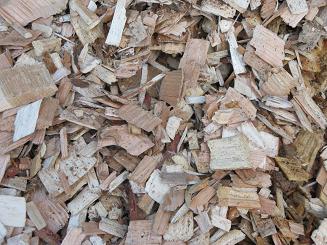Background
Humans can impact population equilibriums by introducing species from other ecosystems. While many introduced plant and animal species are unable to survive or join the native flora or fauna and do no measurable harm, others become invasive and may thrive and spread aggressively. An invasive species gains an ecological edge since the insects, diseases, and foraging animals that naturally keep its growth in check within its native range are not present in its new habitat. As a result, they have the ability to produce large number of offspring each year and may grow quickly, out-competing native species. Invasive species are now widespread across an increasing area, posing threats to habitats and economies. They can be spread through a variety of mechanisms such as nursery stock, accidental releases, and transport of firewood. Once an invasive species becomes established, management can be expensive and, in many cases, eradication may be impossible. Growing and harvesting woody biomass for energy can affect the spread of invasive species.
Concerns
Roads which are established to provide access to biomass plantations or harvest sites foster the entry of invasive species by facilitating access for dispersal through human activities. Vehicles and machinery are major transport mechanisms that spread exotic plants. When that machinery drives through a weed infested area, seeds, spores or vegetative parts may become lodged in the tire treads and undercarriage. They can travel for miles before becoming dislodged in uninfected areas. Invasive species in seed mixes which are used to stabilize exposed soils may colonize an area.
Mitigation Strategies
Developing a proactive plan that focuses on prevention and early detection of new invasions can be effective (Wisconsin Council on Forestry 2009). If new invasive species populations are detected, responding rapidly will increase the likelihood of successful control while keeping costs down. Because invasive species multiply rapidly, an established population may be too widespread and abundant to eradicate once it is detected. In those cases, it may be cost-effective to slow the spread of the species through integrated control and management planning.
Within biomass plantations, biological control can provide a cost-effective and long-term solution to weed management. While it may take several years for biological control agents to establish, they provide long-term suppression and reduce management costs significantly once their populations build to appropriate levels. Leafy spurge, purple loosestrife, and spotted knapweed are all examples of invasive weed species where biological control is successfully being used in several states.
Chemical controls are usually short-term solutions for addressing invasive plants. In some cases, herbicides have to be reapplied annually and certain weed species can begin to develop resistance or tolerance to specific chemicals. Furthermore, large-scale applications can be expensive and detrimental to the environment.
When herbicides are used on a selective basis or as part of an Integrated Pest Management (IPM) program, they are a very useful tool for managing weed problems. An IPM program, which combines the advantages of various control methods, can be used to successfully suppress populations of undesirable plant species.
Mechanical control of weeds can also be accomplished using equipment such as mowers, cultivators, saws, and rakes. Hand tools can be a very successful approach to managing small infestations of weeds.
Some states have published invasive species guidelines which are intended to address invasive species. They can serve as an excellent source of strategies to consider. Selected strategies are presented below. When working with a third-party contractor, consider including relevant mitigation strategies in a written, signed contract.
- Plan management activities to limit the potential for the introduction and spread of invasive species (Wisconsin Council on Forestry 2009).
- Develop early detection and eradication practices to facilitate elimination of small populations of invasive species.
- To the extent practical, use existing roads, skid trails, and landings to reduce disturbance (Wisconsin Council on Forestry 2009).
- Before leaving a work site, walk around and visually inspect vehicles and equipment for and remove caked mud, dirt clods, plants and plant parts, bark and debris (Minnesota Department of Natural Resources 2008).
- Brush, sweep, wash or hand remove plants and plant parts, seeds, mud and soil from grills, tires, wheels, axles, etc. (Minnesota Department of Natural Resources 2008).
- Avoid staging equipment on or immediately adjacent to any of the identified noxious weed sites.
- Avoid moving through existing patches of invasive species going to and from the work site (Minnesota Department of Natural Resources 2008).
- Within mechanical treatment units, exclude all equipment from known infestations. A 25 foot “No Equipment” buffer should be placed around infestations. These areas should be identified on project maps and on the ground with day-glow orange noxious weed flagging.
- Pull known weeds and invasive plants that appear.
- Use weed-free fill and mulch.
- Where site conditions permit, allow natural revegetation of the roads, skid trails, and landings to occur. If seeding or planting is necessary to minimize the threat of highly damaging invasive species from spreading, use native seed or non-invasive cover crops for revegetation (Wisconsin Council on Forestry 2009).
Follow the links below to find out more about the environmental impacts of woody biomass utilization.
- Climate Change and Carbon Sequestration
- Air Quality and Human Health
- Water Quality and Quantity
- Wildfire Prevention and Forest Health
- Biodiversity and Wildlife
- Wood Energy and Soil Productivity
References
- Minnesota DNR. 2008. Discipline guidelines for invasive species management under Operational Order 113. Department of Natural Resources, Division of Forestry, St. Paul, MN. 66 p. Available online at:http://files.dnr.state.mn.us/assistance/backyard/treecare/forest_health/invasiveGuidelines.pdf (accessed March 10, 2010).
- Wisconsin Council on Forestry. 2009. Wisconsin’s forestry best management practices for invasive species: A field manual for foresters, landowners, and loggers. Wisconsin Council on Forestry. Madison, WI. 56 p. Available online at: http://council.wisconsinforestry.org/invasives/pdf/FinalForestryBMPManual_03-26-09.pdf (accessed March 10, 2010).
